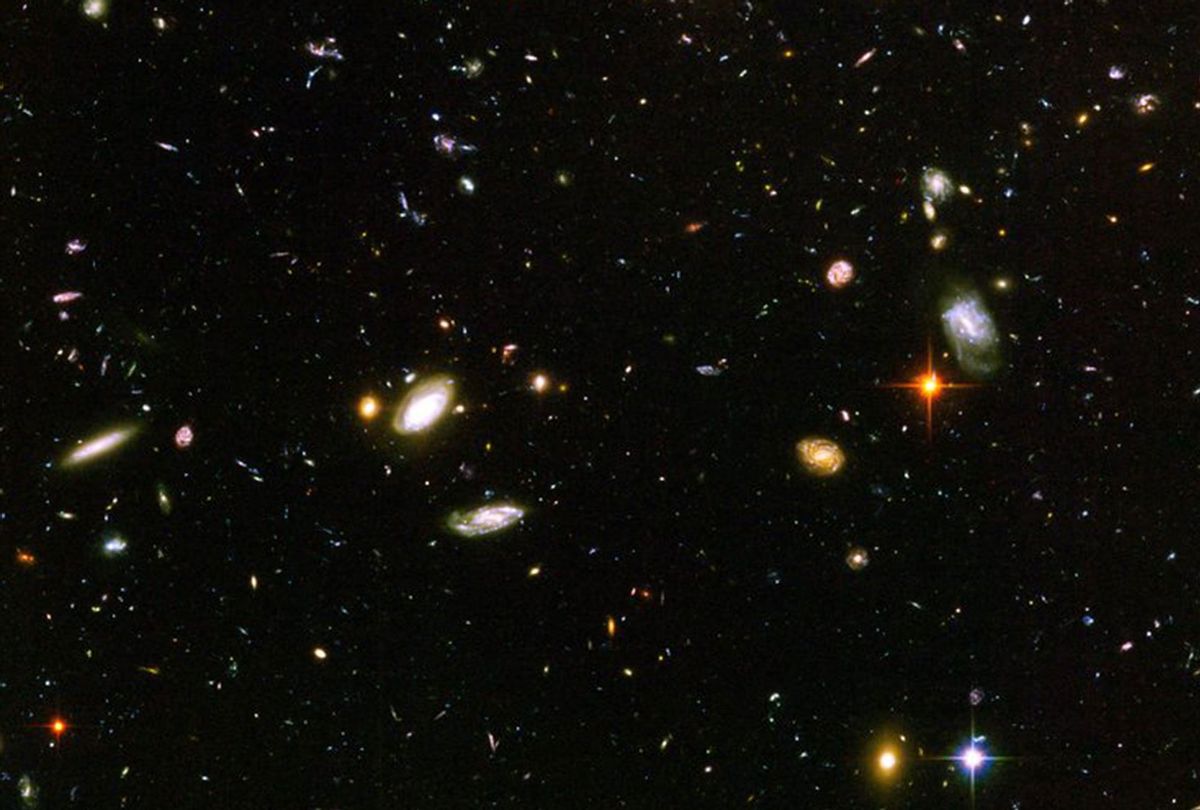Imagine for a moment a neutron star, one of the most exotic remnants of massive stars. These cosmic giants, with magnetic fields a billion times stronger than Earth’s, are intriguing scientists with a bold new idea: they could be the key to unlocking one of the universe’s deepest mysteries—dark matter. Specifically, scientists suspect that certain types of dark matter particles, known as axions, may gather around neutron stars in dense, swirling clouds. These axion clouds, under the right conditions, might emit signals detectable from Earth, giving us a potential new window to spot dark matter.
Why Dark Matter Detection is So Elusive
First, let’s talk about dark matter. It’s that mysterious “stuff” that makes up roughly 85% of all the matter in the universe. Despite being so abundant, no one has ever seen it. We know it exists because of the gravitational effects it has on galaxies and other celestial objects, but attempts to detect dark matter directly have been as elusive as finding a needle in a cosmic haystack. This is partly because dark matter, by definition, doesn’t emit or interact with light in the way regular matter does—so spotting it has been a bit like trying to catch a shadow.
Axions: The Tiny Particles with a Big Role in Dark Matter Theories
The idea that neutron stars might help detect dark matter hinges on the existence of axions, particles so small they make electrons look bulky. These hypothetical particles are part of one of the leading theories of dark matter. They could be incredibly lightweight and carry unique properties that make them interact with magnetic fields and light in strange ways. Unlike other dark matter candidates, axions could potentially gather in high densities around neutron stars, creating a sort of “axion cloud.”
Scientists have been on the lookout for axions because their characteristics fit many of dark matter’s mysterious behaviors. According to new research, the intense electromagnetic and gravitational fields around neutron stars could act as a cosmic trap for these axions, capturing them in dense clouds that could be observable.
Neutron Stars as Axion “Factories”
Neutron stars are known for their extreme environments. When interstellar gas is pulled into a neutron star’s magnetic field, it’s heated and accelerated, creating intense electromagnetic fields. According to theories, these conditions could allow photons (particles of light) to convert into axions, producing an abundance of these particles around the star. In essence, the neutron star could act like a cosmic “factory” of axions, which would then get trapped by its intense gravitational field, forming a dense cloud around it.
In their latest study, scientists used data from a sample of ten neutron stars, analyzing how axions could behave when gravitationally bound to these stars. Their findings suggest that, if axion clouds do exist, they could produce detectable signals, such as radio or X-ray emissions. These signals, scientists hope, could be picked up by our current generation of radio telescopes, like the Green Bank Telescope and the Low-Frequency Array.
What Makes Axion Clouds Stand Out
The density of these hypothetical axion clouds could reach nearly that of liquid water—remarkable for the near-vacuum of space, where the average density is just one lonely atom per cubic meter. At this density, axions could efficiently convert back into photons, creating a “signature” signal in the form of a sharp spectral line, which could be detected by Earth-based observatories.
Scientists have calculated that for a typical neutron star, the axion density near its surface could exceed the surrounding dark matter density by an astonishing factor of over 20 orders of magnitude. This high density means axion clouds could have a strong signal if we look at the right radio frequencies, essentially broadcasting a cosmic radio message that we could detect with today’s technology.
The Road Ahead: What Detecting Axions Could Mean
If these axion clouds can be detected, it would be a huge milestone in physics. Not only would it confirm the existence of dark matter particles, but it would also open the door to understanding how axions interact with electromagnetic fields—information that would reshape our current models of particle physics and cosmology.
Even if these efforts don’t lead to a direct detection of axions, the research is still valuable. It could help narrow down the possible mass range for axions and refine our understanding of their potential interactions. In the future, scientists are planning more in-depth studies on how axions interact with the magnetospheres of neutron stars, aiming to get even closer to pinpointing these elusive particles.
The Exciting Potential of Modern Telescopes
As the technology of radio telescopes advances, so does the hope that we’ll uncover the secrets of dark matter. From arrays in Australia’s outback to observatories in the U.S., astronomers are ready to put their instruments to the test, hoping to catch a glimpse of the universe’s most mysterious ingredient. And who knows? The next big discovery in dark matter detection may come from these neutron star “factories,” spinning quietly and persistently in the far reaches of space, holding clues to mysteries that have puzzled scientists for decades.
So, next time you look up at the stars, remember: there could be more swirling around those bright points of light than meets the eye—maybe even a clue to the universe’s most profound secrets.












Leave a Reply